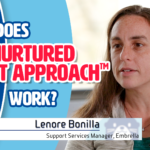When you first decided to become a foster parent, you might not have considered that the child coming into your home could be switching school districts – which means the child may lose touch with friends, have to adjust to new teachers and faculty or manage a whole host of other complications. For a long time, this critical point of difficulty for foster children went unaddressed in the child welfare system. In 2008, however, the federal government introduced the concept of “educational stability” with the Fostering Connections to Success and Increasing Adoptions (FCSIA) Act in the hopes of stabilizing foster children’s education.
Educational stability is a critical piece in understanding how the child welfare system aims to provide the best possible outcomes for foster children. When a foster parent and the state work together ensure that a child’s educational needs are disrupted as little as possible due to the nature of the foster care system, educational stability is achieved.
Stabilizing Foster Children’s Education
Educational stability can sound like just another piece of government jargon, but the fact is it is critical to ensuring positive outcomes for your foster children. The FCSIA was developed to combat some alarming statistics. Foster children can enter the child welfare system with histories of sexual abuse, intensive medical needs, learning disabilities, trauma and more. For these reasons, foster children are already at risk for absenteeism, truancy and dropping out which severely reduces their chances of obtaining a post-secondary degree, let alone a high school diploma.
With such challenges before them, schooling can already be difficult for these children. When you add in the constant moving and shuffling, having to learn new names and faces or adjust to different authority figures and rules, the difficulty only increases. The Division of Child Protection and Permanency (DCP&P) in New Jersey estimates that each new placement change represents roughly 4 to 6 months of lost schooling, which makes educational stability absolutely crucial in a child’s development.
On average, youth in care who receive one less placement than their peers are twice as likely to graduate high school, and a youth who changes schools twice has a 50 percent chance of dropping out. Let that sink in for a moment – if the child in your home is on his first placement and he is moved to another foster home even once, he is 50 percent less likely to graduate.
Ensuring Foster Children’s Education
To help children retain continuity in their education and prevent those months of lost schooling, the FCSIA sets forth a series of requirements for both the state and the foster parent.
To begin, all foster children must be enrolled in a school – no homeschooling is permitted. Secondly, it requires that children remain in the same school they attended before their placement, or, in the event that a child is being re-placed, that she remain in the school she is currently attending, unless it would not be in the best interest of that child. It’s important to know that the state will consider the child’s safety, the school’s proximity to the placement home, the child’s needs and personal preference (as well as a few other factors) when determining the best interest of the child.
DCP&P’s Role in Ensuring Foster Children’s Education
Because FCSIA requires foster parents to keep the child enrolled in their current school, it has a built-in clause which covers the costs of transportation for a child when her education stability is to be maintained. It is the responsibility of DCP&P to to and from school until such a time as the school district has been notified of a foster child’s attendance at a school in that district. Once the school district has been informed, they become responsible for transportation costs.
Your Role in Ensuring Foster Children’s Education
In general, foster parents must make sure their children attend school while also notifying their caseworker of any absences, suspensions or detentions. Similarly, the foster parent has to attend parent-teacher conferences (and other such meetings with school personnel), sign permission slips, consent to participation in school activities and relate the children’s’ progress to their caseworker. While these may seem like basic parental responsibilities to some, foster parents know that educational stability is anything but basic. By working through the struggles of long-distance school districts and complications to family scheduling, after-school activities, jobs held by the foster child or family and more, foster parents go that extra mile to ensure that foster children in their care get the education they deserve.
They do it because they know that educational stability is an important piece in ensuring positive outcomes for children in foster care. The FCSIA represented a huge leap forward in protecting the future of foster children throughout the nation, and it’s important that foster parents are up-to-date on their rights and responsibilities when it comes to maintaining their foster child’s education. In the event of any issues, foster parents should reach out to the Education Liaison at their DCP&P Local Office for assistance.
The information found in this blog came primarily from a DCP&P training developed in cooperation with embrella. To get a more comprehensive overview on the FCSIA, or to better understand the rights, responsibilities, and the parties involved in helping to maintain a child’s educational stability, please take a look at the training, located at embrella.org.


